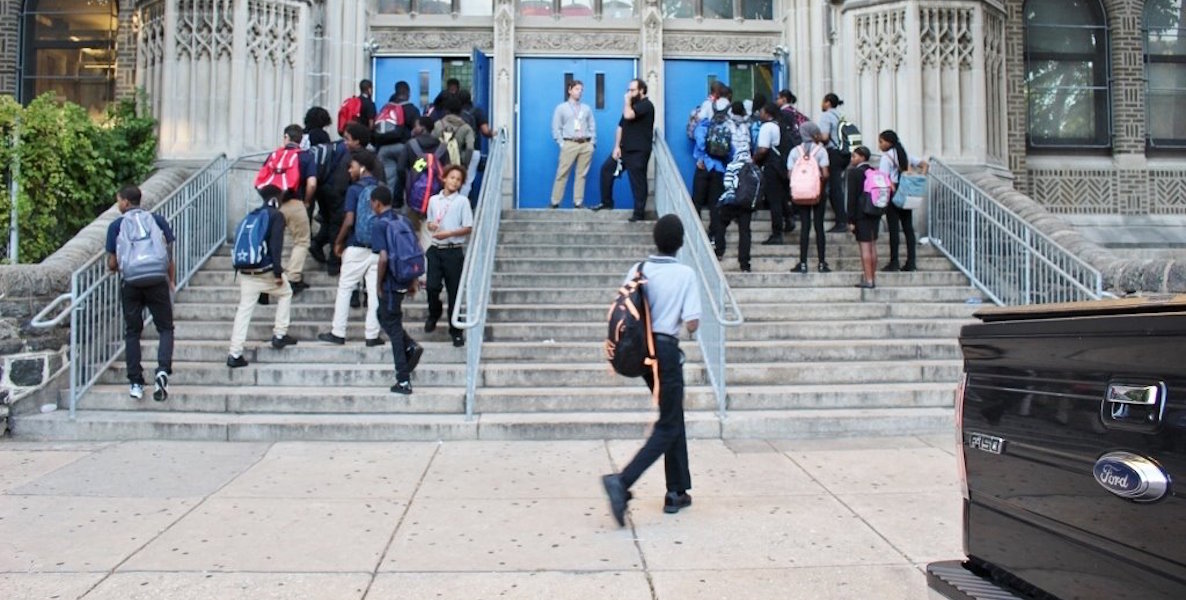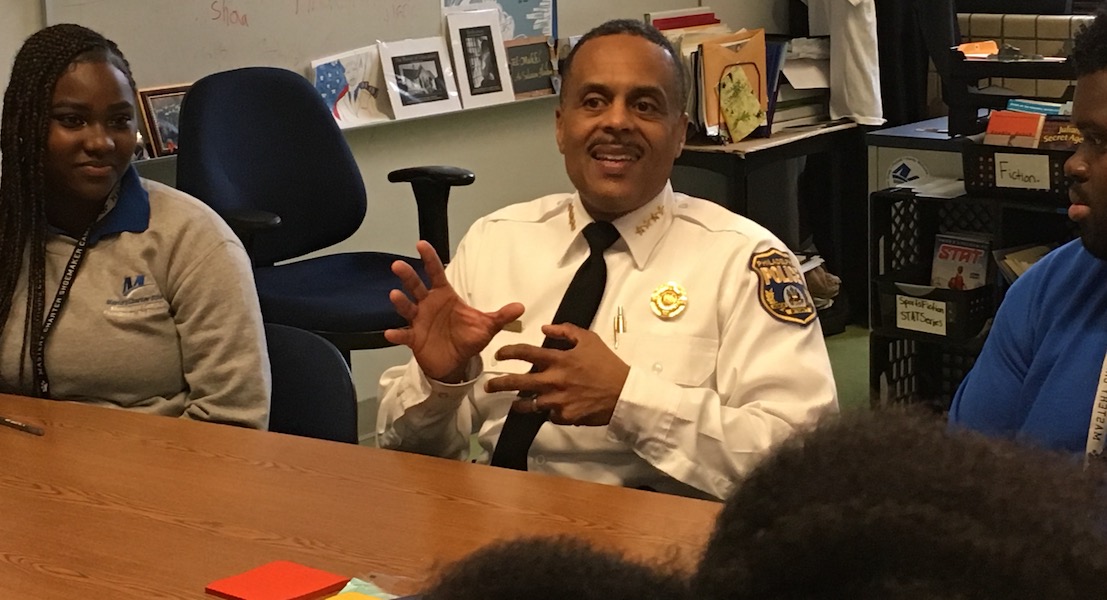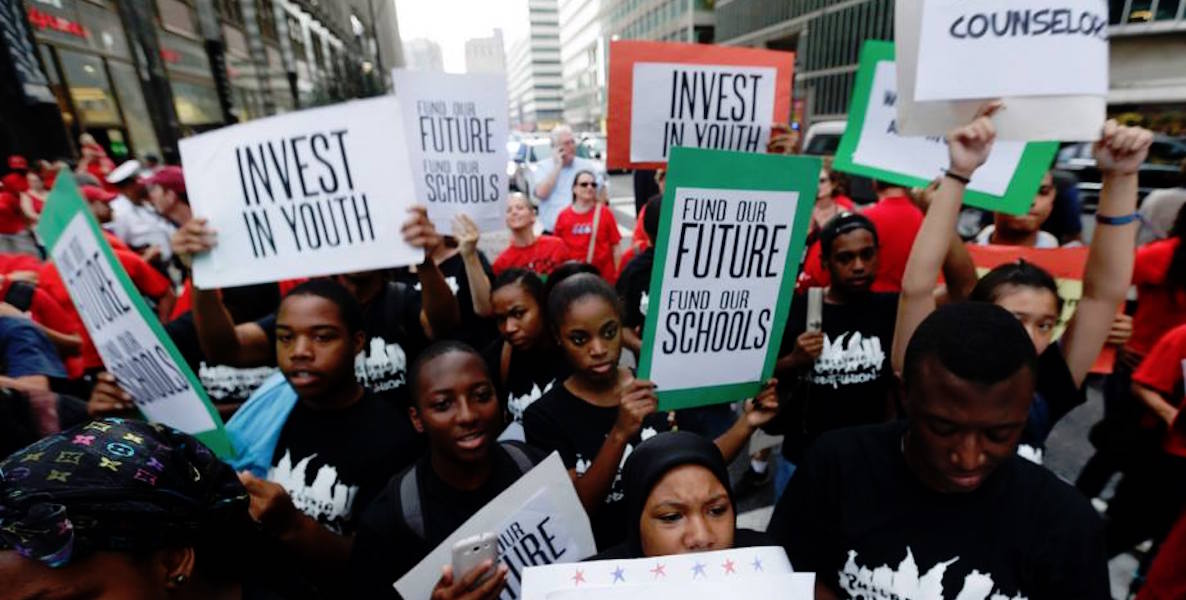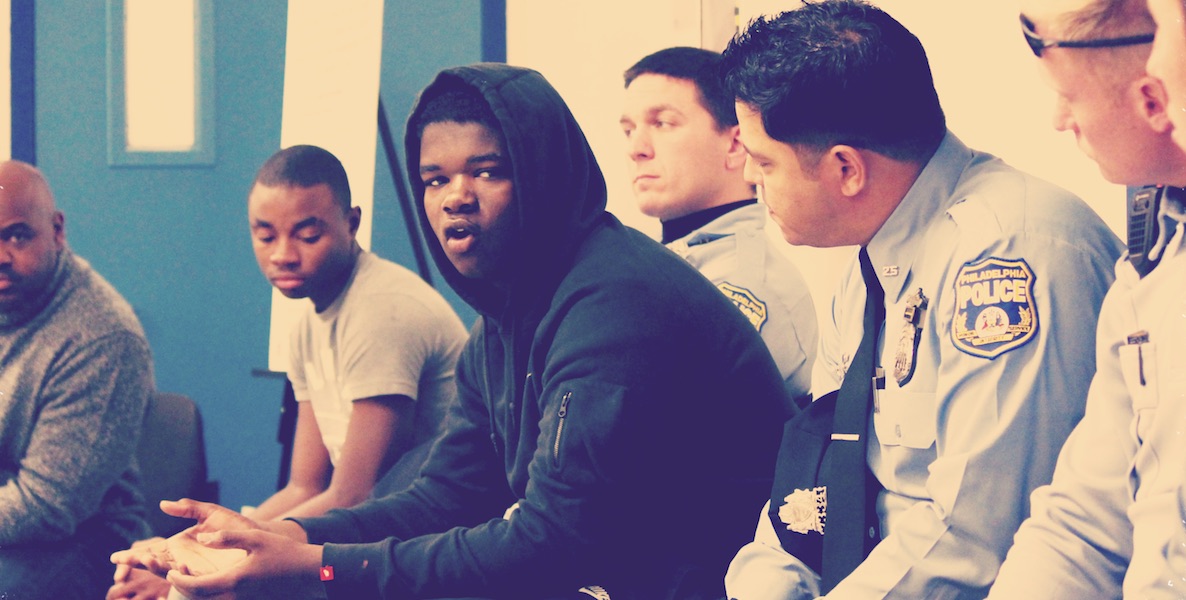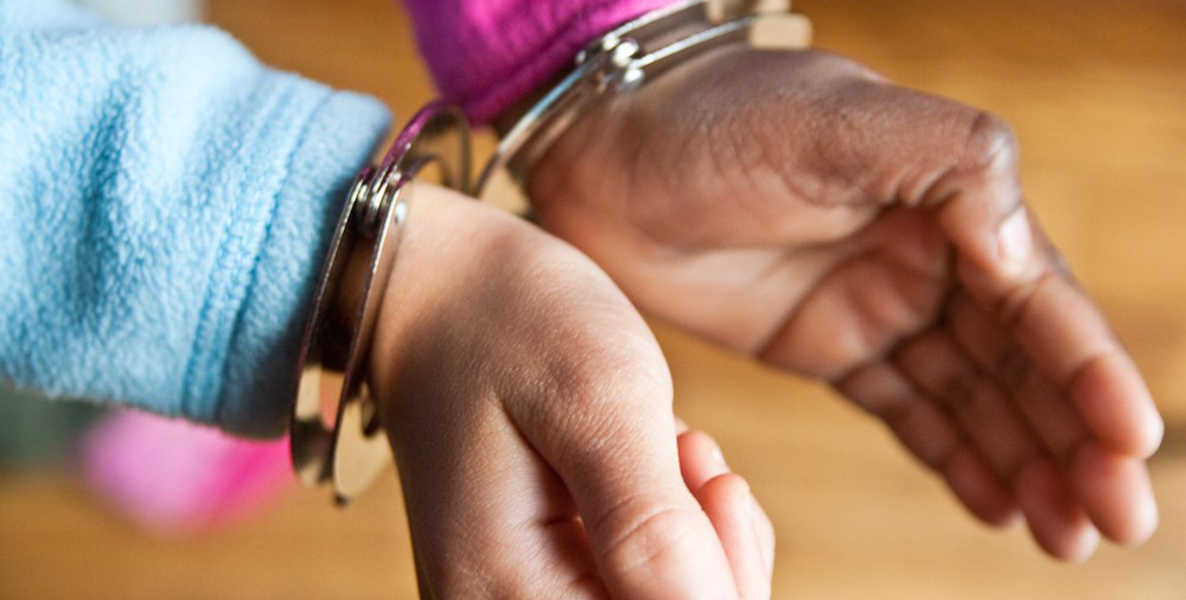“There was one kid,” says Rhonda McKitten, board member at Pennsylvania Disproportionate Minority Contact (PADMC), “who said that it was the first time that he had ever seen a cop smile.”
It’s those moments, in a nutshell, that explain the need for PADMC’s daylong forums, in which cops and kids—mostly African American—interface and share their hopes and concerns with each other. It’s a contrast to how inner city youth and police usually interact, in what McKitten calls a “law enforcement capacity,” with police either responding to an urgent call or having to contend with kids themselves. Cops, to these kids, often aren’t really people; they’re hulking, omnipresent authority figures who fixate on them over their white counterparts. And kids, to these cops, sometimes aren’t really citizens; they’re irrational, confusing proto-people with a penchant for stupid decisions.
This lack of understanding certainly isn’t the root of all problems between cops and the communities they serve. There’s the reality that rears its head all too frequently—like the incident caught on video in January that appears to show a police officer throwing a teenage girl on the ground and repeatedly punching her during a brawl in West Philly. Or the way police officers can feel more like intimidation than safety outside a school. Or the frightening reports of another young African American man shot to death by police around the country.
But one simple fact complicates things for sure: For some of the kids who attend PADMC’s forum program, it’s the first time that they’ve ever had a single positive interaction with a police officer.
Black juveniles are 269 percent more likely to be arrested on curfew charges than their white counterparts; black juveniles are also 2.5 times more likely to receive charges for property crimes than white juveniles. This has a serious effect: Kids who serve time in juvenile detention centers are considerably less likely to finish high school and considerably more likely to end up in prison as adults.
PADMC, which was founded in and operates out of Philadelphia, is a nonprofit committed entirely to unskewing the massive overrepresentation of minority youth in juvenile detention facilities through a variety of methods, the most prevalent of which is simply training adolescents and police to relate to each other. The group has trained more than 3,000 police officers and 2,000 youth thus far, and is immensely popular among police officers, who see it as an invaluable resource in helping them more meaningfully connect with at-risk minority youth.
And well they should. African American youth are treated vastly differently from their white counterparts. According to the U.S. Office of Juvenile Justice and Delinquency Prevention, 176,659 of 8,691,029 of white youth who are determined to be at risk of delinquency had their cases referred to juvenile court; out of 2,390,091 at-risk black youth in the same year, 163,372 had cases referred to juvenile court. That’s only 13,000 more white kids being charged with criminal offenses than black kids—despite their at-risk population being about three times larger.
It’s not just the case-rate that’s completely out of whack, though; it’s also the nature of the arrests that lead to charges. According to the Sentencing Project, a fair justice system advocacy group, black juveniles are 269 percent more likely to be arrested on curfew charges than their white counterparts; black juveniles are also 2.5 times more likely to receive charges for property crimes than white juveniles. This has a serious effect: Kids who serve time in juvenile detention centers are considerably less likely to finish high school and considerably more likely to end up in prison as adults; similarly, kids who have less positive exposure to police more likely to go to prison.
The PADMC was formed more than eight years ago to combat this problem. It’s an offshoot of the Harrisburg-based Pennsylvania Commission on Crime and Delinquency (PCCD), a collaboration of police and private citizens that develops and supports juvenile justice-related programs throughout the state. (In January, Gov. Tom Wolf appointed former Philly Police Commissioner Charles Ramsey as chair of the commission.)
As part of its work, the group realized that it needed to reevaluate the nature of delinquency from the ground up, and better understand what puts minority youth at far greater risk of incarceration and delinquency charges than white youth. The PADMC, according to McKitten, developed its defining program—the kids and cops forums—with the help of PCCD funding and a MacArthur Grant in 2005, and has since exploded in popularity with police departments.
The PADMC forums typically take place over the course of a full day in different jurisdictions, and open with kids and cops addressing one another and airing their grievances and concerns. This can get pretty heated; body language is tense, and cops and kids aren’t voluntarily comingling, even after the group breaks down into smaller, more focused subgroups. The teenagers complain that cops seem as though they’re almost certainly not on their side; cops talk about how kids appear to be disrespectful and unnecessarily halting around them. And then, just as things are coming to a head, everybody goes to lunch.
“And it’s really over lunch that we see the biggest difference,” says McKitten, who helped develop the curriculum, during years she spent as a Philly public defender. Lunch is unstructured time; there’s no prompting, and no facilitator. The only requirement is that young people and officers sit at the same table. “It’s just getting to know each other,” McKitten says. “And there, officers get to hear what kids want to do with their lives, and kids hear that officers have families that they want to go home to—that when they come to a scene, they might be afraid as well. These are issues that a lot of teenagers don’t think about, and it’s incredible how thoughtful some of the young people are, and how some of them open up.”
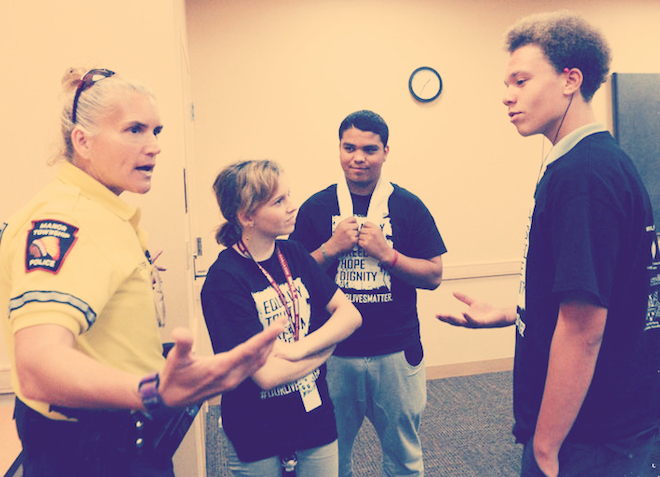
After lunch, kids and officers separate; officers do training on adolescent development and youth trauma, and kids do work on how to more safely interact with police. The instruction ends in role playing exercises involving both kids and cops. By the end of the day, it’s not uncommon to see officers and kids hugging and joking, and officers giving kids their cards, offering their help if they’re ever in trouble.
“It really is a thing to see,” says McKitten.
But it doesn’t end there for the police officers. They return for another half day of training, to run back with each other and PADMC their interactions with minority youth and discuss what they’ve learned. They also receive something of a cursory training in youth psychology. McKitten said that early on in the program, officers said that they wanted to better understand the minds of young people, so PADMC worked to include a behavioral aspect to their training. One of the main impediments stopping cops from more meaningfully connecting with and understanding juveniles, PADMC found, is that they often assume the average 18-year-old is a fully-formed adult, when, in reality, they are far, far from it. PADMC furnishes officers with some background as to why kids don’t always make the best choices in their presence.
“Researchers say that by even the ages of between 25 and 27, the brain is still developing in significant ways. The frontal lobe, which is the executive portion of the brain controlling long-term planning and risk and reward—a lot of the things we care about when we think of how young people and police interact with each other—is still developing,” says McKitten. “Obviously, it’s not that teenagers can’t make good decisions. It just makes it more difficult to make good decisions when their emotions are high.”
“Officers get to hear what kids want to do with their lives, and kids hear that officers have families that they want to go home to,” says McKitten. “These are issues that a lot of teenagers don’t think about, and it’s incredible how thoughtful some of the young people are, and how some of them open up.”
This portion of the training, McKitten says, is particularly eye-opening for officers (and surely a bit unnerving for those whose frontal lobes are still developing). The totality of the training, from interaction to juvenile development training, according to McKitten, is why PADMC’s model has been used and replicated across the country. Gainesville, Florida’s police department has modeled their DMC program on PADMC, as have police departments in Illinois and Connecticut; PADMC’s footprint in-state is huge, too, with seven jurisdictions in Pennsylvania working with the group. Police departments outside of Pennsylvania, according to McKitten, find that programs modeled after PADMC help their officers more fully prepare for difficult on-the-job situations involving juveniles.
McKitten has worked with PADMC for more than a decade. She says she was inspired by the group’s early work, and that as a public defender—and director of juvenile grants and policy for the Defender Association of Philadelphia—she found it thrilling to see a group working to make positive changes in the basic ways in which kids and cops interact. She now serves as the corporation’s director, and has recently made a related career change: A few months back, she left the defender’s office to work inside the Police Department, coordinating and developing programs to help police officers interact with kids in their communities. Her new gig, which stems from her body of work at PADMC, is funded by a grant from the Stoneleigh Foundation. (Stoneleigh also funds the work of former Deputy Commissioner Kevin Bethel, who helped the city launch a diversion program to keep students in school and out of jail.)
There’s an unnerving amount of problems to settle when it comes to changing how we treat juvenile offenders, and even more to address when it comes to interactions between cops and African American kids. Better understanding—as initiated by McKitten and PADMC—is one step in the right direction.
Header photo by Pennsylvania Disproportionate Minority Contact


